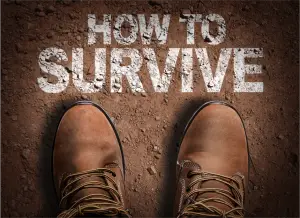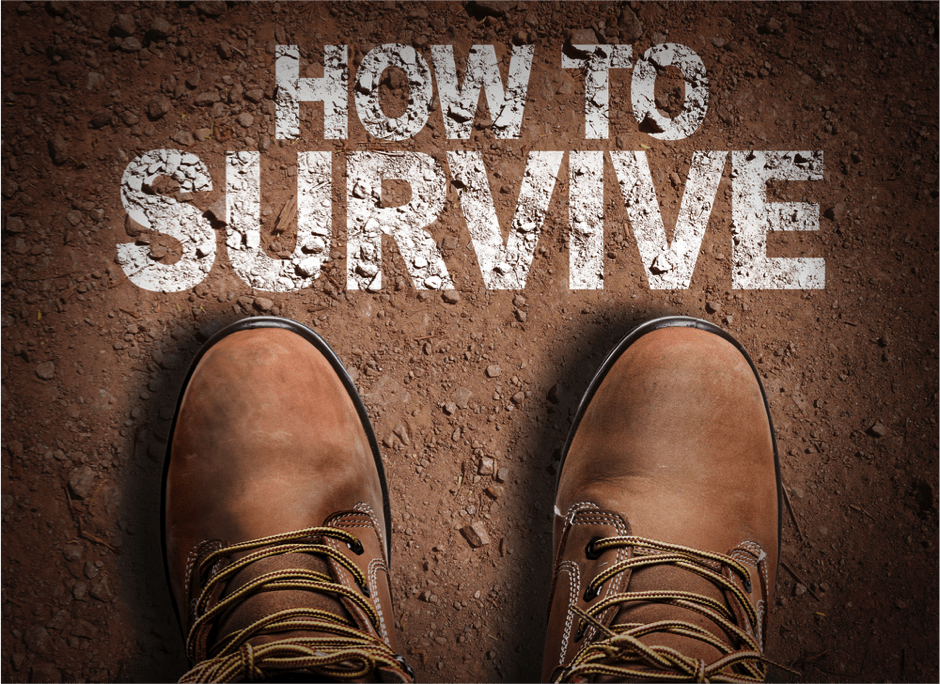 Are you making your first steps in the world of survivalism? If so, learning survival from books in the very beginning makes a lot of sense.
Are you making your first steps in the world of survivalism? If so, learning survival from books in the very beginning makes a lot of sense.
Books are essential to proper training. The knowledge within them can guide your personal experiences and prevent mistakes.
Nothing beats practical experience with a good instructor, but that is not available to everyone.
Needless to say, survival books are not created equal. To learn from the best, you may want to consider a few of these titles.
The Prepper’s Long-Term Survival Guide
The list starts with the Prepper’s Long-Term Survival Guide. The book tops many charts in relevant forums and discussion boards. Published in 2014, this book is written by Jim Cobb – a trainer for a disaster preparedness company.
Cobb has long written articles about survival, disaster preparedness and budget-friendly preparation.
This book focuses predominantly on long-term survival in emergency situations. It doesn’t focus too much on surviving in nature. Rather it addresses scenarios of chaos and turmoil (something that we could be facing in the near future?).
The book has a big number of positive reader reviews and most focus on the practical and actionable tips.
Cobb’s guide includes chapters on food, water, medicine and personal hygiene, security, tools and even how to survive the boredom that could be linked to living in a bunker for a prolonged period of time.
Wilderness Survival
If you are specifically interested in wilderness survival, you will definitely fancy the second edition of Wilderness Survival by Gregory J. Davenport.
As the name suggests, this book will teach you how to make the best of your circumstances whenever you’re stranded in nature.
People who love the outdoor have to prepare for all kinds of extraordinary circumstances and the book provides a lot of valuable information.
The book is the result of the work and the experience of a former USAF survival instructor.
Davenport is also an escape specialist and a top survival expert worldwide.
Thus, learning from the best is possible with this title.
Some of the most important topics covered in Wilderness Survival include:
- How to sustain health in the wilderness
- Medical kits, gear and other essentials for survival
- Personal protection
- Sustenance
- How to return home
The Survival Handbook
The name of this book by Collin Towell says it all. The Survival Handbook also comes with a pretty impressive cover design. Not the most important characteristic of the book but certainly one that catches the eye.
Collin Towell is a prolific writer that specializes in the survival genre.
He’s published a number of books on the topic, including Essential Survival Skills, The Survival Handbook in Association with the Royal Marines Commandos and the Survival Handbook: Endurance Essentials for the Great Outdoors.
As the name suggests, the book offers a comprehensive look on everything pertaining to survival.
It doesn’t focus on one specific scenario as some of the previous entries in the list. Another great aspect of this publication is that it features a wide array of detailed illustrations that provide additional information on top of the text.
98.6 Degrees: The Art of Keeping Your Ass Alive
With such a cool title, 98.6 Degrees: The Art of Keeping Your Ass Alive by Cody Lundin deserves inclusion in the list.
A few of the essential topics that the book focuses on include the following:
- Different survival situations and how they start
- Survival psychology
- Overcoming fear
- Adaptation
- Surviving in the outdoors
- Your first line of defense
- How to come in contact with rescuers
- Survival kits
As you can see, the book discusses both actionable tips and somewhat philosophical aspects of staying alive. If you are interested in a comprehensive look at survival that’s delivered with a nice sense of humor, the book will be the right option for you.
98.6 Degrees is based on the experience and knowledge of Cody Lundin – the finder of Aboriginal Living Skills School. Another fun fact you may want to know is that Lundin is the only person in Arizona to hold a license for catching fish with his hands.
US Army Survival Manual
When learning, it’s a good idea to learn from the best.
Army personnel are professionally trained to survive all kinds of situations, which is why you may want to take a look at the US Army Survival Manual by the Department of Defense.
The US Army has training for survival in all kinds of climates and under any circumstances.
All of the information in this book has been field-tested, which adds to the practical application points of the publication.
The book features both step-by-step instructions and illustrations to ensure outdoor survival in any scenario.
There are actionable suggestions for hikers, hunters, athletes and outdoor enthusiasts who could face potentially dangerous situations.
Field Guide to North American Edible Plants
The final entry in the list is a slightly more specialized publication that can prove to be very beneficial for survival enthusiasts.
Field Guide to North American Edible Plants by Thomas Elias covers more than 200 edible plant species and there are detailed illustrations to make the identification of each easier. There is also information about the distribution of the species, their seasonality, the ways to harvest and to prepare each one.
This book isn’t the most imaginative survival guide out there but it can prove to be life-saving. Some wild plants are potently toxic and they can lead to serious issues. Thus, consuming plants to stay alive isn’t something simple or safe. The book is an ideal read for hikers and other individuals who like to spend a lot of time in nature.
From the Owner of this Website:
The Prepper’s Guide to Foraging is not a plant identification guide in the traditional sense. It is instead a guide to using plants to supplement other means of food production and subsistence living. Author David Nash believes that there is not enough land available for to support a large-scale return to the hunter-gatherer lifestyle in the event of a large-scale disaster, but that botanical knowledge does provide an edge to the well prepared.
This book advocates the acquisition of knowledge to allow its reader to safely identify, harvest, and use common North American plants. Wild plants can provide shelter, material, medicine, and food to help the reader extend stored food as well as to create items that may be otherwise unavailable during a crisis.







